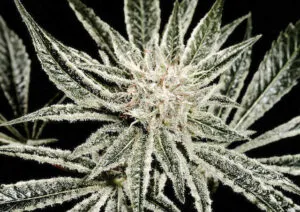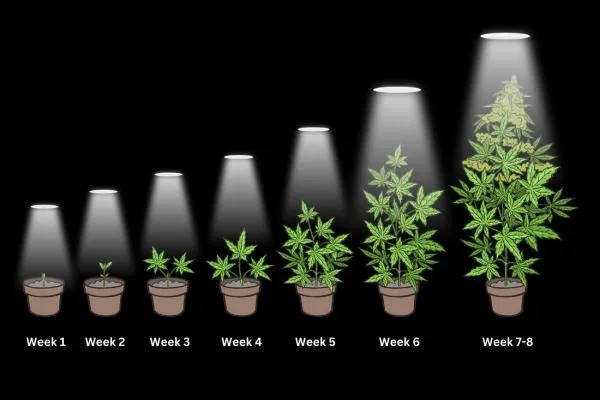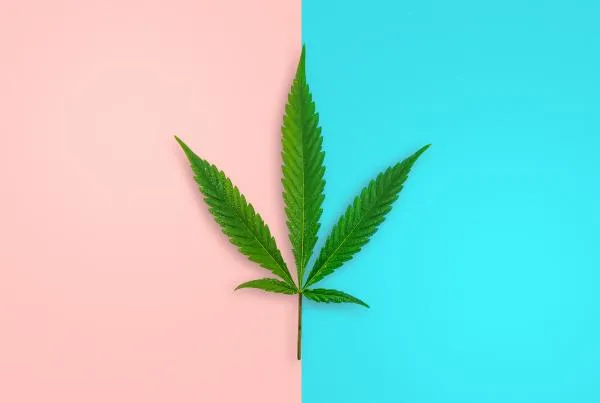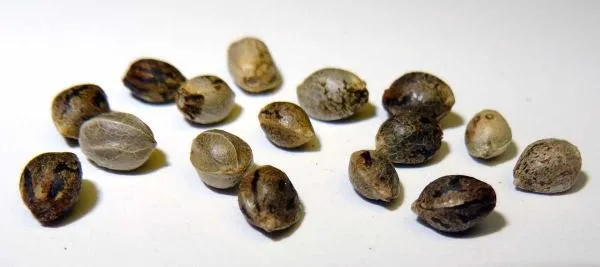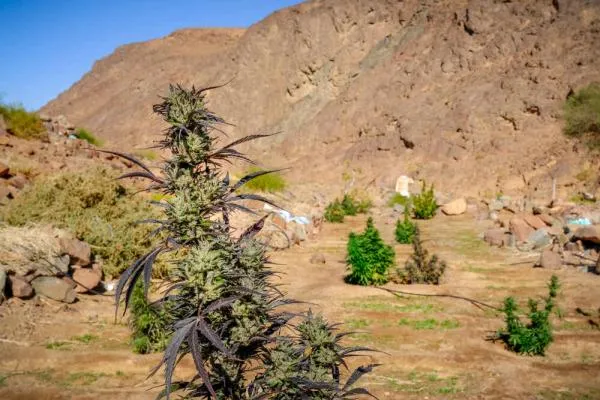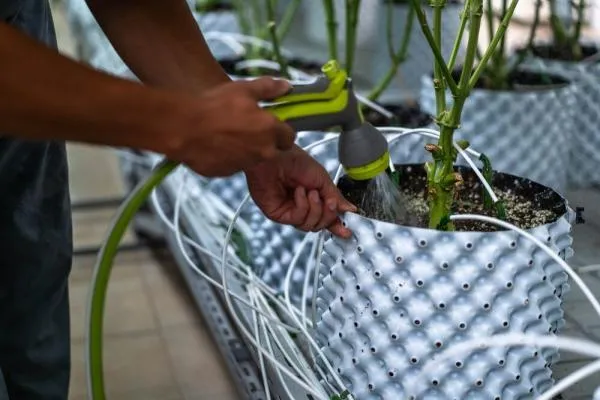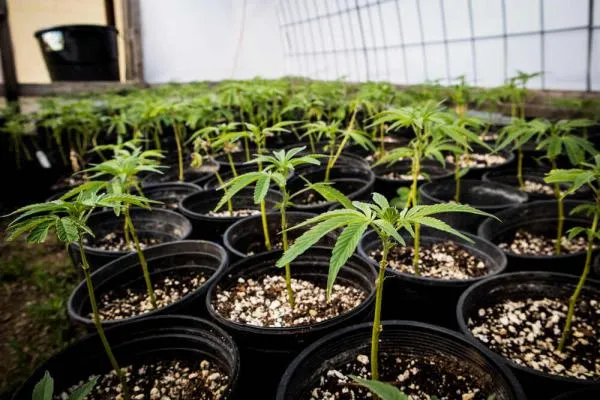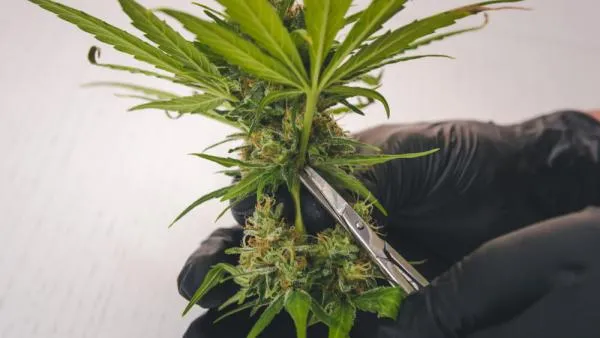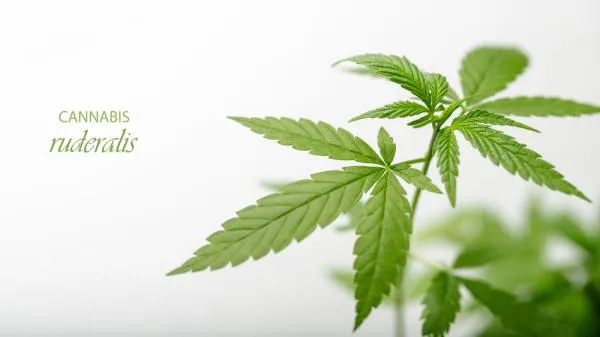A marijuana plant has many parts. Of these, people are often most familiar with the buds and the large fan leaves that are the trademark of a cannabis plant. Once a plant has grown though and is ready to be dried, growers will notice much smaller leaves emerging from the buds. These are sugar leaves. They get their name from the many trichomes found all over them.
So, what are these leaves? Should you trim them? Can you smoke them? Read on to find out!
What are sugar leaves?
A marijuana plant has many leaves. There are the long, finger-like fan leaves, and then there are sugar leaves. Sugar leaves are very different than fan leaves. Both are covered in trichomes, the white and sticky molecules loaded with THC. However, sugar leaves have many more. In fact, they are nearly covered in trichomes, giving them a very frosty appearance.
Sugar leaves are also much smaller than fan leaves. Sometimes they may grow directly out of the bud, while other times they may just grow out of the side. How many of these tiny leaves a plant has will depend on their strain. Some strains have many leaves, covered in many trichomes. Others will have many leaves with just a smattering if trichomes.
The amount of leaves seems to depend on the size of the buds. Larger buds will have fewer sugar leaves, while smaller buds will have more. No one is quite sure why this occurs, but it seems to be a fairly consistent growth pattern.
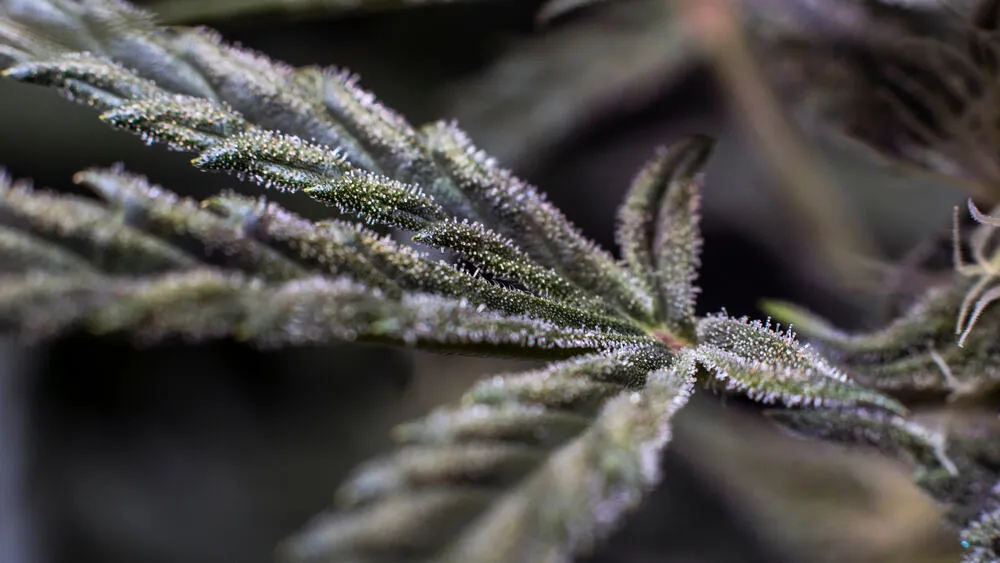
How to trim sugar leaves
Like so many other parts of growing, how you choose to trim your sugar leaves is up to you. Many keep the leaves on after harvest and trim them once the leaves are dry. This can be beneficial, as the leaves can help protect the buds during their drying phase. Others like to trim them right after the plant has been cut, just before it is ready to hang dry.
Regardless of when you cut them, you will need a couple of tools. These include a very sharp pair of scissors, preferably that have been sterilized so they do not cause damage to the plant. Also, rubber gloves are very helpful. Trichomes are very sticky and that stickiness can quickly build up on the hands. This can make trimming the leaves very difficult.
When actually trimming the leaves, they should be cut as close to the bud as possible. It’s important to ensure though, that you aren’t cutting off any of the bud. To do this, hold the bud by the stem and carefully snip off the leaves. The more contact the scissors have with any part of the plant, the more trichomes you could lose. Holding the plant over a screen while trimming can help retain some of the trichomes.
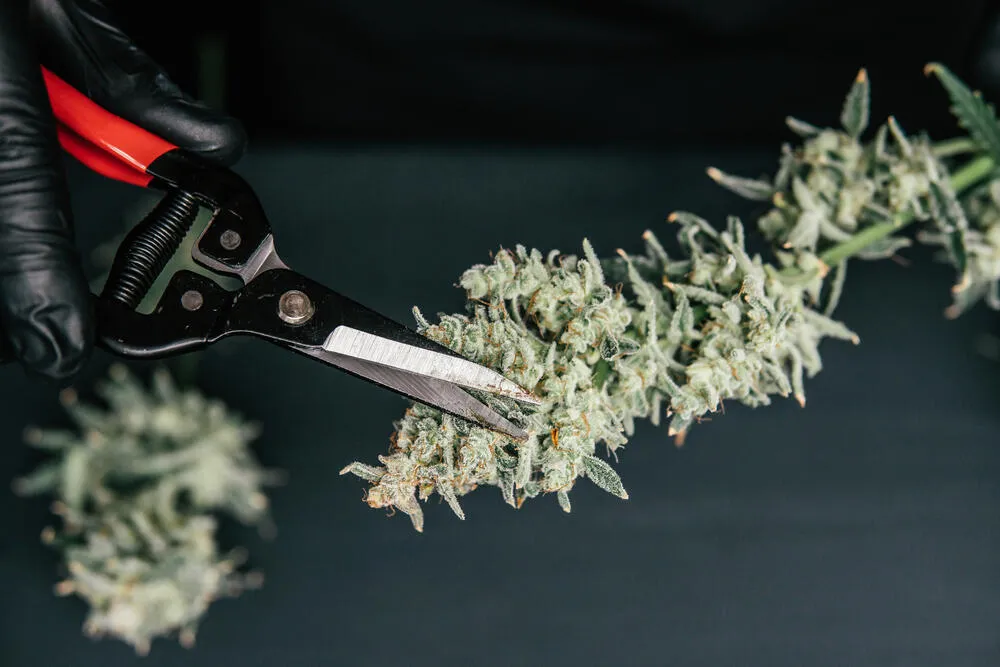
Can you smoke them?
Cannabis fans want to make the most of their entire marijuana plant. And like stems, leaves, and resin, many wonder if they can smoke sugar leaves. The answer is that it really depends on personal preference.
Some growers choose to leave the leaves on their buds because it will help boost the weight of the bud. However, this is never a good reason to avoid trimming the leaves. Many may find the smoke unpleasant, as any leaves on a plant will yield a very harsh smoke. They also don’t taste like marijuana buds. Instead, they carry a flavor of plant material, which others will also find off-putting.
Those that do want to make the most of the entire plant by smoking the leaves can do so. There are though, a few things to keep in mind. The first is that while they do have the trichomes that can help one get high, the leaves are still not as potent as the buds. Because of this, more leaf matter will have to be ground up and used. When smoked, the same quantity of leaves will not produce the same high as an equivalent amount of buds.
Grinding the leaves along with the buds can help. This way growers can boost the amount they’re using, without feeling too many of the unpleasant effects leaves can bring.
Other uses for sugar leaves
Those that want to extract the most THC from their plant as possible, without actually smoking the sugar leaves, can do so a number of different ways.
Vaping is the first and obvious choice for many. When weed is vaporized, it is not combusted. Instead, they are vaporized, which means the cannabinoids and terpenes are simply evaporated. This provides a super tasty experience, with little to no harshness.
These leaves can be added to any plant matter used for making cannabutter. First, decarboxylate any plant parts you’re using. This step involves spreading the plant matter in a single layer on a baking sheet. Then, bake it in the oven at a low temperature, about 245 degrees Fahrenheit. The weed should roast for about 30 minutes, but will need turning every ten minutes or so. This will ensure all of the weed gets decarbed.
Once the marijuana has been decarbed, about one cup of butter should be melted on the stovetop. After the butter has melted, the weed can then be added. Stir the butter and plant matter together. It then needs to cook for approximately an hour over very low heat. The butter should never come to a boil, or it will start to brown and burn.
The butter will be hot after cooking. Due to this, it should be set aside until it’s cool enough to handle. Then you can just strain it using a cheesecloth or fine-mesh sieve. After straining, the cannabutter can be stored in the fridge for as long as needed.
Oils can also be made the same way as cannabutter. Just follow the steps to make the butter, substituting oil for the butter. Then store at room temperature and use in salad dressings, or anything else you cook.
Many prefer to use their leaves to make hash, or extracts. This can be done with a CO2 extractor, through dry-sifting, mechanical drums, or ice water extraction. Making hash is an investment, both of your time and the equipment you’ll likely need. However, it will provide a tasty addition to your bowl or joint.
Lastly, like any part of the marijuana plant, sugar leaves can also be dried and ground before being added to food such as pizza. There will be no way to activate the THC with this method. However, it can still provide the benefits of other cannabinoids, such as CBD, which is useful for medicinal users.
Conclusion
Sugar leaves are very pretty, but to some they are also useless. They don’t need to be, though. Those that know how to perfectly trim them will find these leaves have plenty of uses. Plus, using them in some form means nearly every part of the plant is fully functional.
